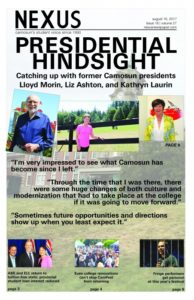If you’ve spent any time at all in the Capital Regional District, you are quite familiar with just how bad the southern island’s traffic congestion issues really are. The region’s population is rapidly growing, and, according to census data, the population of metro Victoria exceeded the national growth rate over the last five years.
So we know that people are flocking to our island in large numbers, but how is our infrastructure holding up to this significant increase in population? Victoria mayor Lisa Helps has been an important advocate for creating bike lanes throughout the city, which, theoretically, reduces traffic gridlock while also getting more of those pesky carbon-emitting vehicles off the streets as more and more people exchange cars for bicycles as their main form of transportation.

Bike lanes alone, however, cannot stem the overarching issue here: we have too many vehicles and not enough overpasses, routes, or lanes. We could build all of those things over time with government subsidies, and I believe the city will eventually be forced to build more interchanges, like they are doing with the McKenzie Avenue interchange project. A common criticism of the new interchange is that it may simply move the chokepoint down one block instead of addressing the root cause of the issue: we have too many cars on the road and our infrastructure cannot sustain it.
If only we had some kind of a derelict but existing rail line with a path already cleared from the West Shore to downtown Victoria… like, oh, say, the E&N rail line? With the right budget, we could easily repair or upgrade the existing tracks and build half a dozen stations along the route; the best part is that the rail would pay for itself over time through riders’ fees. This is not a new idea, but it’s one that has gained surprisingly little traction in our community, even as so many of us suffer through long daily commutes and the infamous Colwood Crawl, which, literally, moves at a snail’s pace.
Cutting down on the number of cars idling on the highway every day isn’t a bad idea, and you would think that such an environmentally conscious city would be jumping all over this proposition. The rail line would not even have to support a high-speed train to begin improving traffic efficiency: a regular train would still be able to shuttle thousands of people a day over the relatively short distance between West Shore and Victoria.
Vancouver’s SkyTrain lines and San Diego’s Trolley system have both been hugely successful in stimulating population and revenue growth in declining neighbourhoods and city centres, pumping billions of dollars of investments into areas where these lines pass through, and breathing new life into stagnant parts of the cities.
As Victoria and the capital region continue to outpace the rest of Canada in population growth (who wouldn’t want to live here? We have no snow and it’s Canada’s Florida!), we need to be open and ready for change. Whether or not we want to accept it, Victoria is no longer a quaint little town in the corner of the map, and it’s quickly transforming into a miniature Vancouver; I believe a light rail system is the kind of change this town needs as it goes through that transformation.

